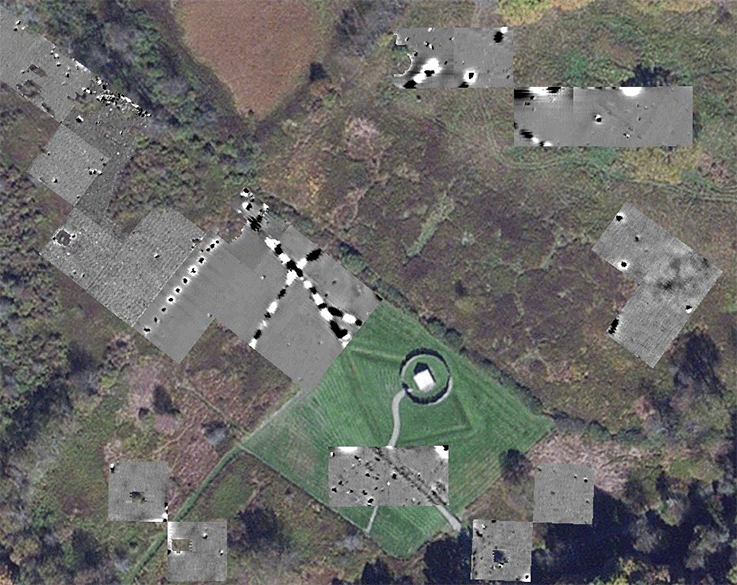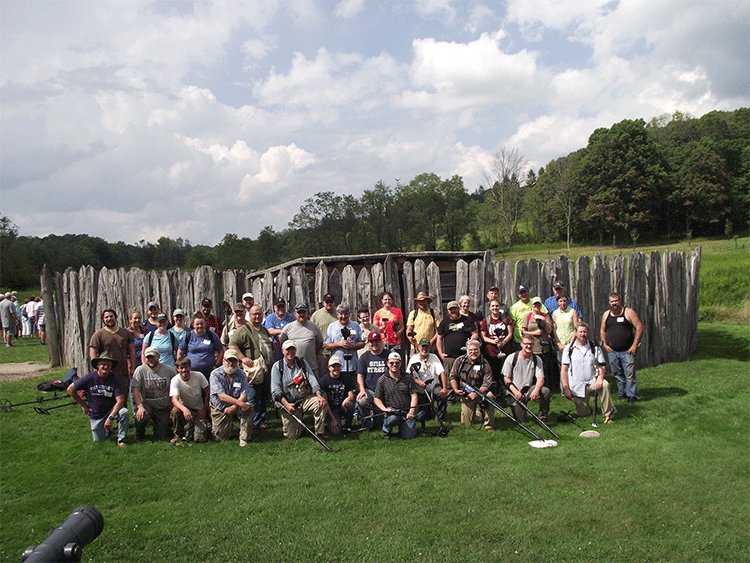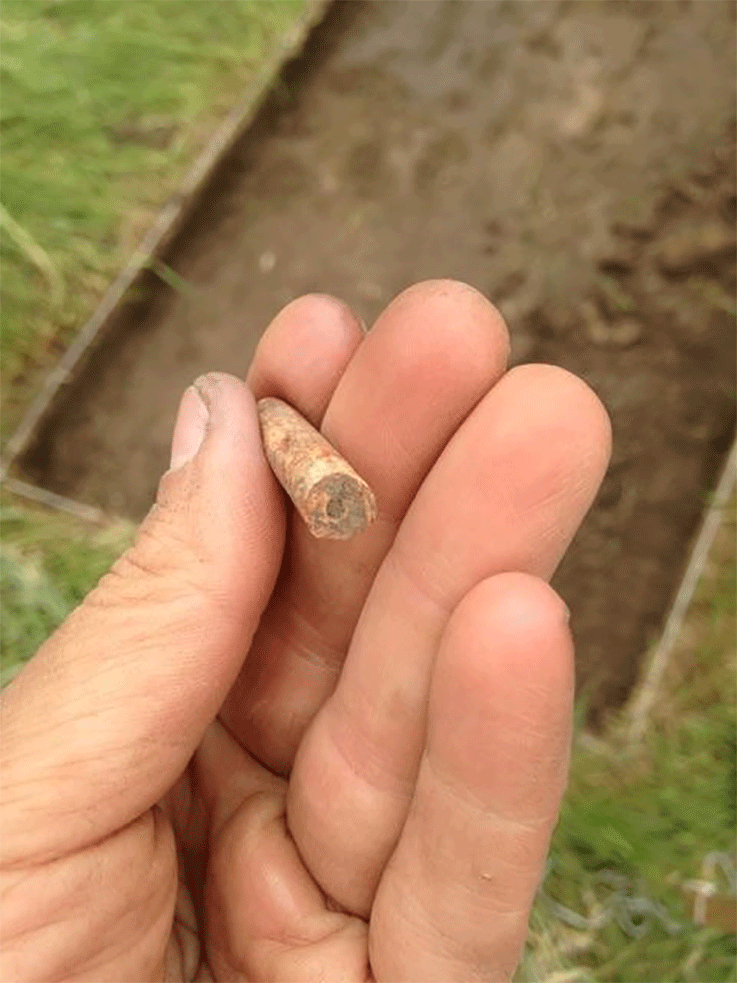National Park Service and Cooperative Ecosystem Study Unit funded research at Fort Necessity National Battlefield. Research includes archaeological excavations, geophysical investigations, shovel test pit surveys, metal detector surveys, artifact analysis, and historical research.
 Fort Necessity is the most recognizable landmark from young George Washington's foray into western Pennsylvania, during which he helped instigate the Seven Years War. In 1754, a 22-year-old George Washington was sent to western Pennsylvania to push the French from the region. On May 28, colonial and native soldiers under Washington's command killed Joseph Coulon de Jumonville and most of his force, who were carrying a message ordering Washington to leave the area. Expecting a reprisal from the French, Washington's troops fortified their depot in the Great Meadows, naming it Fort Necessity. On July 3, French soldiers under the command of Louis Coulon de Villiers, Jumonville's brother, attacked Fort Necessity. After a day of fighting in the rain, Washington surrendered. The killing of Jumonville, which Washington admitted to in his surrender, ignited the Seven Years War, the first truly intercontinental war.
Fort Necessity is the most recognizable landmark from young George Washington's foray into western Pennsylvania, during which he helped instigate the Seven Years War. In 1754, a 22-year-old George Washington was sent to western Pennsylvania to push the French from the region. On May 28, colonial and native soldiers under Washington's command killed Joseph Coulon de Jumonville and most of his force, who were carrying a message ordering Washington to leave the area. Expecting a reprisal from the French, Washington's troops fortified their depot in the Great Meadows, naming it Fort Necessity. On July 3, French soldiers under the command of Louis Coulon de Villiers, Jumonville's brother, attacked Fort Necessity. After a day of fighting in the rain, Washington surrendered. The killing of Jumonville, which Washington admitted to in his surrender, ignited the Seven Years War, the first truly intercontinental war.
Today, Fort Necessity National Battlefield contains a reconstruction of Fort Necessity and the surrounding Great Meadows where the battle was fought, as well as Jumonville Glen where Joseph Coulon de Jumonville was killed. The park also includes the Braddock Grave site, where General Edward Braddock was buried after a second failed British attempt to eject the French from the region in 1755. Braddock was successful in building a road across much of Pennsylvania that became part of the National Road, the first improved highway in the US. This aspect of the region's history is interpreted through the Mount Washington Tavern.
 IUP began working at the site in 2015 with a large geophysical survey that employed ground penetrating radar, magnetic gradiometry, and electrical resistivity. These geophysical rests were followed by more than 30 excavation units to uncover evidence of Washington's time at the fort as well as later changes to the landscape. Other parts of the project have included metal detecting and shovel test pit surveys in areas where the park would like to make changes. We also hosted an Advanced Metal Detecting for the Archaeologist class. AMDA is a national organization that teaches archaeologist to effectively use metal detectors.
IUP began working at the site in 2015 with a large geophysical survey that employed ground penetrating radar, magnetic gradiometry, and electrical resistivity. These geophysical rests were followed by more than 30 excavation units to uncover evidence of Washington's time at the fort as well as later changes to the landscape. Other parts of the project have included metal detecting and shovel test pit surveys in areas where the park would like to make changes. We also hosted an Advanced Metal Detecting for the Archaeologist class. AMDA is a national organization that teaches archaeologist to effectively use metal detectors.
 In 2016, IUP and AMDA were able to identify one of the French positions during the attack on the fort. Dropped French and fired British musket balls were found in this area, along with a sword guard, buttons, and a French spontoon. Other finds include the remains of a possible log road and intact ground surfaces from the 18th century.
In 2016, IUP and AMDA were able to identify one of the French positions during the attack on the fort. Dropped French and fired British musket balls were found in this area, along with a sword guard, buttons, and a French spontoon. Other finds include the remains of a possible log road and intact ground surfaces from the 18th century.
The Fort Necessity project provides students with a chance to gain paid experience in a cultural resource management environment. Ben Ford directs the project.